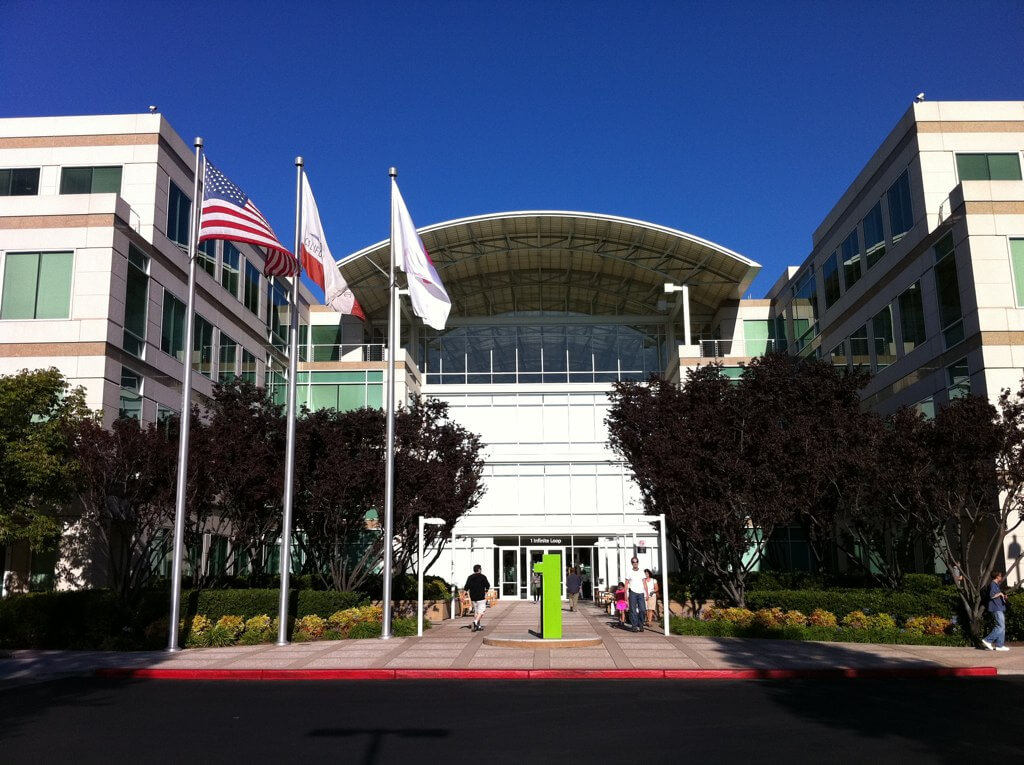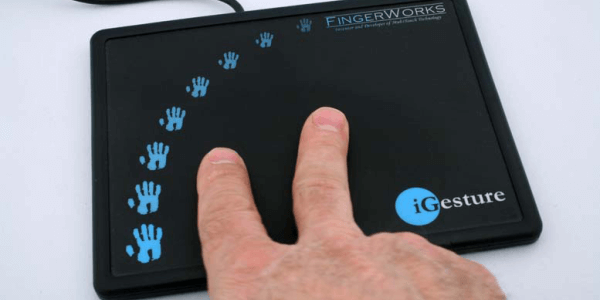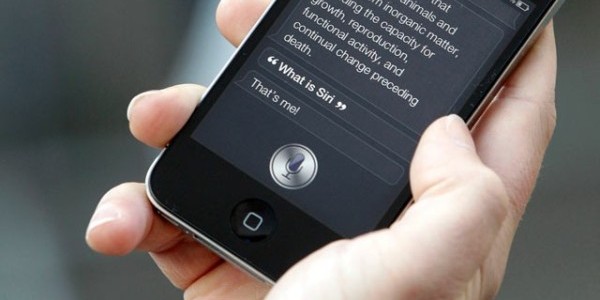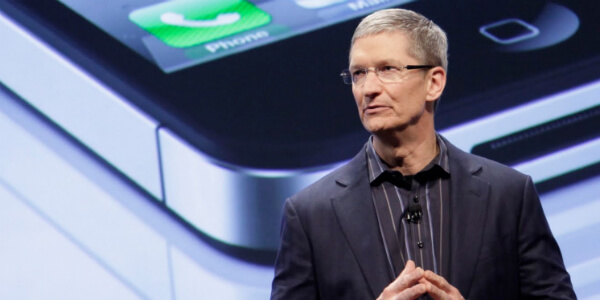Like most large corporations with a healthy bank balance, Apple goes on the hunt for acquisitions from time to time. It often makes more sense to buy up a company and absorb its technology than try to compete against it, spending money to do the same research and potentially end up falling foul of patent laws.
Apple never makes a big noise about its activities, but its been buying up companies and acquiring tech since the late 80s. The most famous of which is when it bought NeXT, which would go on to provide the basis for OS X and also brought Steve Jobs back into the fold.
But the speed at which Apple is doing deals has increased rapidly in recent years. It made fewer than ten major acquisitions in the 80s and 90s, but since 2000 that number has risen to over 40 – and those are only the ones we know about.
Apple’s mobile future
As Apple moved towards the mobile space, its choice of targets changed. The 2005 acquisition of Fingerworks should have signaled that Apple was up to something. This US company manufactured a multi-touch keyboard and the iGesture Pad – a device not unlike Apple’s Magic Trackpad. Undoubtedly Fingerworks’ technology played a key role in the development of the iPhone, released two years later.
Then, as Apple’s manufacturing partners slowly became its competitors, Cupertino’s focus switched again. In 2008 it bought P.A. Semi (Palo Alto Semiconductor) for an alleged $278 million in cash. Specializing in the design of powerful, low-power silicon chips, it was precisely the know-how Apple needed for its future iOS devices.
This was followed two years later by the purchase of another semiconductor company, Texas-based Intrinsity. In a deal valued at $121 million, Apple picked up the company’s expertise in designing highly efficient semiconductor logic, which helps to squeeze more power from fewer transistors while using less power. The buy-out also prevented the technology from falling into the hands of Samsung.
The engineers from P.A. Semi and Intrinsity on Apple’s payroll helped develop the market-leading A-series CPUs, including the 64-bit processors found in the latest iPhones and iPads.
The advent of these CPUs has seen Apple’s competitors scrambling to catch up: Qualcomm, manufacturer of the Snapdragon processor, publicly dismissed the 64-bit chip as a “marketing gimmick.” But an employee later revealed its release was completely unexpected. “The 64-bit Apple chip hit us in the gut,” he admitted. “Not just us, but everyone, really. We were slack-jawed, and stunned, and unprepared… and now everyone wants it.” So for Apple, these investments were definitely money well spent.
Apps and services
2010 was a busy year for Apple. First it picked up Siri, the mobile assistant app maker, ostensibly to add voice recognition to its devices, but also as a way of competing with Google search. Rumors in Silicon Valley placed the deal somewhere north of $200 million, which sounds like a vast amount for an app, but the tech is based on government-funded research and is actually worth a fortune in intellectual property rights.
Then, later that year, Apple bought up Polar Rose, a Swedish developer of facial recognition software, for around $29 million. As well as being used for tagging photos, it may well form part of iOS devices’ future security function in conjunction with Touch ID. Acquiring tech like this also stops it from being absorbed by Google’s Android OS.
To round the year off, UK company Imsense was brought into the Apple fold. Its ‘eye-fidelity’ software is able to instantly tone-map HDR images, bringing out hidden details while preserving realistic colors. In all likelihood, this code was introduced into iOS 4.1 with the addition of the HDR option in the Camera app.
The purpose behind some of Apple’s purchases are more obvious than others. When it bought Authentec, which made biometric sensors for touch controls for $356 million in 2012, it was fairly apparent that it meant the iPhone (and possibly other devices) would gain a fingerprint recognition system, which was duly introduced as Touch ID a year later.
However, last year’s takeover of PrimeSense, makers of the original Xbox360 Kinect motion sensor, is less clear-cut. Is it to develop a gestural system for a new TV set? Hands-free control for the iPhone or for laptops? Could the company’s tiny sensors even fit into an iWatch, providing an invisible interface without the need for a touchscreen? We’ll have to wait and see.
The road ahead
Understandably, in the last few years most of Apple’s acquisitions have centered on improving its iPhone ecosystem and mobile offerings. For example, its mapping solution has been reinforced by the purchase of several mapping companies. In fact it’s acquired eight mapping and location services since 2008: Placebase, Poly9, C3 Technologies, WiFiSlam, Locationary, HopStop.com, Embark, and BroadMap, which it picked up in December. This little shopping spree cost Apple at least $300 million – and, given that the details of these deals go largely unreported, probably considerably more.
Low-energy chipmaker Passif joined Apple’s ranks in August of last year, bolstering Apple’s semiconductor capability further still. The kind of chips Passif develops use tiny amounts of power, and the tech clearly aligns with Apple’s Bluetooth-based iBeacons system. It could also work with WiFiSlam’s indoor GPS technology, to help mapping locations such as hotels, shopping malls, arenas, and so on.
A few days after inking the deal with Passif, Apple procured a video programming recommendation site called Matcha.tv. The service lets users aggregate programming guides for services like Netflix, Hulu, and Amazon, and its recommendation algorithm is allegedly best-of-breed. With all the channels being added to the Apple TV, this clever code is probably already in iTunes, helping to curate the 800,000 shows and 350,000 movies it streams every day to its 13 million Apple TV users. But that’s not to say it couldn’t also be built into a smart TV set, should Apple ever decide to make one.
Big spender
It’s notable that 2013 was Apple’s busiest year for acquisition, snapping up no fewer than 12 companies, at a cost of somewhere in the range of $700-$800 million. But this is peanuts compared to Google, which has, since 2001, bought 144 companies, including YouTube for $1.6 billion, Nest Labs for $3.2 billion and Motorola for $12.5 billion, which it later sold part of for $2.9 billion.
So far 2014 has been quiet for Apple, with just two minor purchases. One-man operation Snappy Labs was snatched up in January for some state-of-the-art software. Its founder and single employee, John Papandriopoulos, developed a JPEG compression system that enabled the iPhone 5 to shoot in burst mode, taking 20 eight-megapixel shots per second (and out-performing the Galaxy S4). Whether Apple uses the technology or not, having someone this smart on the team is clearly a good move.
Then, just two weeks ago, Burstly, a beta-testing and analytics company closed its Android service down and discontinued its TestFlight developer kit. It’s not yet been confirmed, but fingers are firmly pointed in the direction of Apple, which will no doubt deploy the system to supplement its own developer services.
What’s next?
Tim Cook and Co. are clearly being both frugal and thoughtful with their cash (despite having $150 billion of it). At the moment, Apple is making strategic acquisitions only when it sees opportunities to strengthen or complement its core offerings. But we’re still waiting for the big one, where Apple drops a bundle of notes on a massive media or hardware company – names like Sony and Nintendo have long been bandied about, but nothing ever materialized.
Other suggestions include buying ebay and PayPal to own the e-commerce space; picking up Netflix to get into the entertainment business; or buying Yahoo for search. And what about an electric car company? Rumor feathers were ruffled recently when Tim Cook met Elon Musk from Tesla, the electric car company, but Musk says he’s not for selling. Shame: we can really see where an internet-enabled electric sports car slots right into Apple’s product line.
The wait for Apple’s Next Big Thing goes on.






